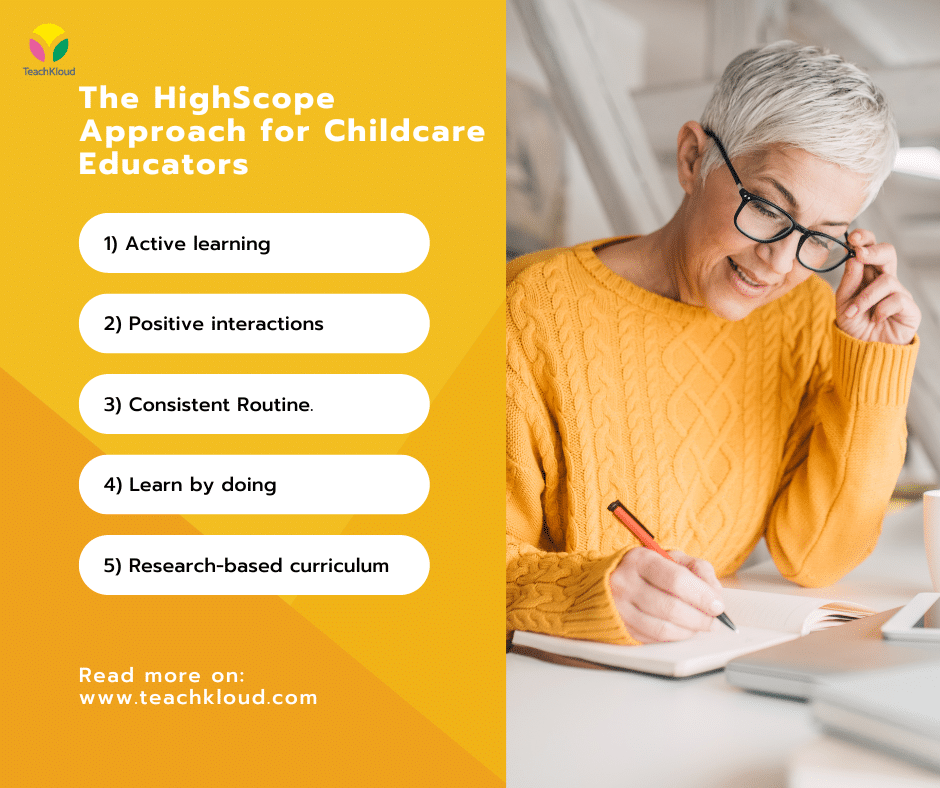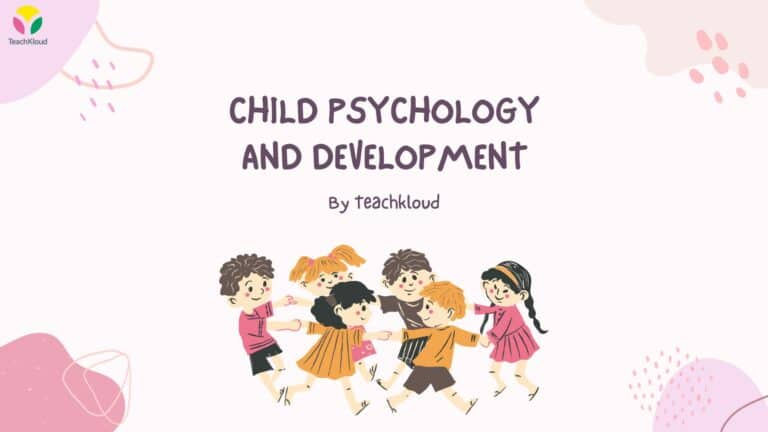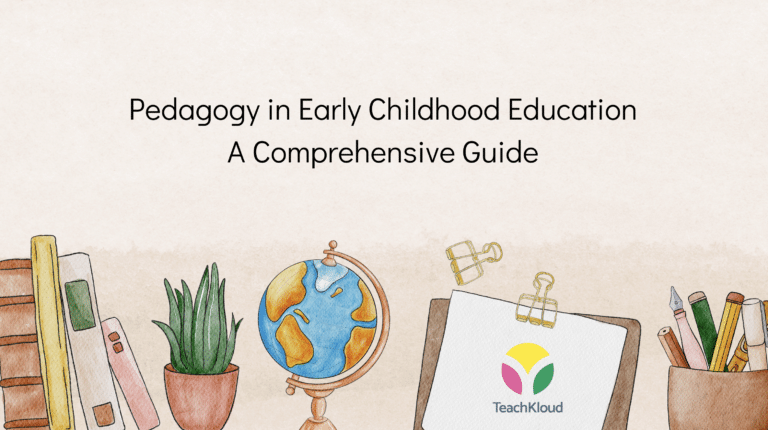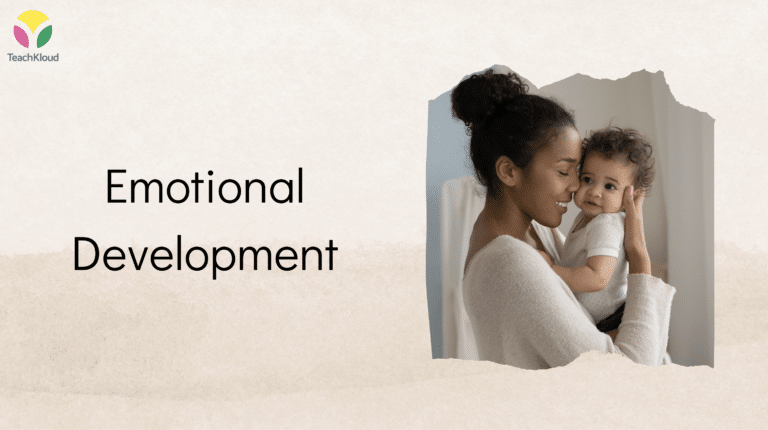Understanding the HighScope Approach
What is the HighScope Approach? This educational philosophy, rich in its emphasis on active participatory learning, has been moulding young minds for almost six decades. It centers around the belief that children learn best when they’re fully engaged and self-directed in their learning process. The HighScope Approach, just like paint on an artist’s easel, integrates teaching and learning into a kaleidoscope of intermingled strategies.
This approach encompasses a wide range of key elements, including active learning, a supportive learning environment, daily routines that are child-led, a structured curriculum, and the indispensable role of the educator. But it’s not just about what happens within pre-school walls; the HighScope Approach ensures strong involvement from parents and caregivers, framing them as partners in their child’s educational journey.
Unlike traditional education models, the HighScope method allows children to learn through experiences, bringing their unique perspectives, curiosity, and direct interaction to the educational setting. This approach is flexible enough to be tailored to each child’s individual needs, fostering their individual strengths, interests and developmental needs. It’s an educational philosophy that is spontaneity-oriented yet structured, where active experimentation and intentional teaching go hand in hand. The HighScope Approach is a roadmap to holistic, engaged, and meaningful early learning.
Now that you have a general understanding of the HighScope Approach, let’s look at it’s key principles and how they can be implemented in your pre-school or childcare setting.
Key Principles of the HighScope Approach
Recognising the HighScope approach’s unique nature requires a deep understanding of its core principles. These principles, grounded in decades of educational research and child psychology, define the essence of the HighScope method.
1. Active Participatory Learning
The HighScope method places an emphasis on active participatory learning. The philosophy believes that children flourish when they’re ‘doers’, engaged in hands-on experiences. There are five ingredients of active learning that the HighScope approach advocates: i) materials ii) manipulation iii) choice iv) child language and thought, and v) support from adults.
2. Learning Environment
The second indispensable principle is the planning of a supportive learning environment. HighScope classrooms are divided into areas intended for distinct types of play. The setup encourages independence, allowing children to explore and learn through interactions with their surroundings.
3. Consistent Daily Routines
A significant aspect of HighScope methodology is the implementation of consistent daily routines. This revolving series of routines, developed by educators and children, gives structure to the day and allows children to anticipate what’s coming next, fostering feelings of security.
4. Adult-Child Interaction
The fourth principle, adult-child interaction, is all about forming meaningful relationships. This foundation is built on shared control, in which educators act as partners in learning, assisting children instead of directing them.
5. Assessment and Planning
The last principle is assessment and planning. HighScope promotes a cycle of observation, documentation, and planning around individual children’s interests and abilities. These assessment strategies aid in tracking and supporting individual developmental progress, enhancing each child’s learning trajectory. We’ll discuss this in more depth as we go. The main thing to remember, is that all of these principles are interconnected and work synergistically do support children’s development in the most thoughtful way. Watch our comprehensive masterclass for childcare professionals on observing, reflecting and documenting in a meaningul way, with an optional e-certificate. Click here to watch for free.
The Importance of Active Learning in HighScope
Central to the HighScope educational approach is the concept of active learning. This is not merely a theoretical concept, but rather a practical strategy focused on enabling children to learn through direct, hands-on experiences with people, objects, events and ideas. The belief is that children engage in learning with their whole beings; their arms and legs, hearts and minds, senses and emotions, are all involved in the process of discovery.
Active learning in HighScope implicates five key ingredients: materials, manipulation, choice, child language and thought, and support from adults. Let’s break these down. Materials refer to the learning aids used in the HighScope setting, ranging from playthings, puzzles, books, art supplies to natural objects, which encourage exploration and inquisition. Manipulation is the physical interaction by the child with these materials which enhances their sensory experience. Choice determines the child’s autonomy in selecting the activities, enabling them to drive their own learning process. Child language and thought comes into play when children articulate their experiences, promoting cognitive development. Lastly, the role of adults is crucial in providing a stimulating and supportive environment, fostering the child’s growth and sparking their interest.inherent curiosity. They act as guides, introducing new ideas and concepts, helping solve problems and facilitating social interaction. By knowing when to step in and when to let children discover on their own, adults play an instrumental role in the successful implementation of the HighScope Approach. This delicate balance ensures that children are motivated, confident, and fully engaged in their own education. The role of the educator is crucial in providing an optimum learning environment where child-driven learning thrives. It is the educator’s role to prepare children for the future by honing their problem-solving skills, nurturing their creativity, and building their social and emotional intelligence.
The Importance of Planning and Reflection in HighScope: The Role of the Educator in HighScope
In the HighScope approach, planning and reflection hold paramount importance. Not only do these aspects foster children’s cognitive development, but they also shape the role of the educator, making it highly distinctive and multidimensional.
As an educator in a HighScope setting, you are a facilitator, observer, evaluator, and a co-learner. Planning and reflection stand at the core of these roles, allowing you to offer meaningful learning experiences to children.
Facilitator
Initial planning begins as you design an enriching environment, with materials and activities that stimulate curiosity and promote active, hands-on learning. However, your responsibility doesn’t end there; it extends to observing how children interact with the environment and then planning further to support their interests and needs.
Observer
Being an effective observer is critically important. Observing children’s actions, conversations, choices, and interactions will provide you with valuable insights. These observations can inform your planning, helping you to provide tailor-made experiences that can enhance their learning and development. Watch our comprehensive masterclass for childcare professionals on observing, reflecting and documenting in a meaningul way, with an optional e-certificate. Click here to watch for free.
Evaluator
As an evaluator, you’ll reflect on the observations you’ve made, scrutinising them deeper to understand the progress and needs of the children. This process allows you to evaluate whether your educational approach aligns with the children’s learning trajectory, and what could be improved or modified for better outcomes.
Co-learner
One of the key aspects of the HighScope approach is that you are not just an instructor but a co-learner. This perspective puts you in a position where your planning and reflection evolve along with the learning process of the children. By asking open-ended questions, engaging in shared discoveries, and reflecting on the experiences, you foster a rich, reciprocal learning environment.
The cyclical process of planning activities, implementing them, observing children’s responses, and reflecting on these observations plays a crucial role in driving children’s learning in HighScope settings. By performing these roles effectively, you contribute to a consistent, organised, and supportive environment that nurtures children’s growth and promotes their independence.
In essence, the effectiveness of a HighScope program rests significantly on your shoulders as an educator. It is through your thoughtful planning and critical reflection that children are guided and encouraged to become active participants in their learning. By embodying these roles, you truly become an impetus in shaping confident, capable, and curious learners.
Collaborating with Parents in HighScope
An integral aspect of the HighScope approach is strong, effective collaboration with parents. Although you’re the educator, in HighScope, parents are seen as partners and are encouraged to be actively involved in their child’s learning journey. Strong relationships with parents foster a more enriching environment and stimulate a child’s development. This mutual cooperation ensures continuity in learning both at school and home. So, how do you achieve this collaboration effectively?
Promoting open communication
Regularly sharing updates about a child’s progress and behaviour is essential. This can take the form of informal discussions during drop-off and pick-up times or more formal meetings like parent-teacher consultations. Clear and open communication helps to reassure parents that their child is thriving and valued. It’s also an excellent opportunity for you to learn more about the child’s family life, interests, and routines at home.
Involving parents in the learning process
Beyond just sharing updates, you should encourage parents to be actively involved. Invite parents to classroom activities or special events. These hands-on experiences not only stimulate a child’s learning but also provide parents with a deeper insight into their child’s development and the effectiveness of the HighScope approach.
Providing resources for at-home learning
Extend learning beyond the walls of your childcare setting. Sharing resources for at-home learning helps families play an active role in the child’s development. This could be books, games, or activity suggestions that align with what the child is currently learning. It maintains continuity in the child’s learning and provides a shared context for future discussions with parents.
Respecting and integrating diverse family cultures
Every child and their family come with their own unique backgrounds and cultures. Recognise these differences and incorporate elements of each child’s culture into the learning environment. From celebrating different festivals to encouraging parents to share about their heritage or traditions, embracing diversity enhances cultural sensitivity and helps children feel known and celebrated. Using modern apps like TeachKloud, can enable educators to share observations and linkages to the HighScope curriculum in seconds.
A solid parent-educator partnership not only enriches a child’s learning experience, but it also cultivates a sense of community and trust. The HighScope approach acknowledges this, viewing parents as essential partners in the educational journey.
Observing and Documenting Children’s Learning with Teachkloud
Observation and documentation are cornerstones of the HighScope approach. There’s a significant emphasis on recognising and recording the unique progress of each child, which is where Teachkloud comes in.
Teachkloud is a childcare management app that makes this key aspect of the HighScope approach easier, more efficient and highly effective. With Teachkloud, you can continually observe children in their natural learning environments, capture their learning processes, and document their progression towards developmental and learning goals.
Teachkloud’s user-friendly interface makes it simple to record observations regardless of your comfort level with technology. Through its built-in features, you can sort and categorise observations, align them with the HighScope key development indicators (KDIs), as well as create individual child profiles. This allows you to track where each child is thriving and where more support might be needed.
More than just a tool for observation, Teachkloud provides a holistic and comprehensive view of the child’s development. This includes cognitive, physical, emotional and social aspects. It also helps identify patterns and trends in individual children’s behaviours, interests, and abilities over time. Watch our comprehensive masterclass for childcare professionals on observing, reflecting and documenting in a meaningul way, with an optional e-certificate. Click here to watch for free.
Creating a Complete Learning Story
With Teachkloud, documenting a child’s ‘learning story‘ becomes a seamless process. A learning story is a narrative, centred around individual or group experiences, achievements and breakthroughs. They spotlight the child’s development and learning journey, offering a chronological view of their progress. By capturing moments of play, exploration, creativity and interaction, you thread together a detailed narrative that tells the dynamic and individual stories of each child’s growth and development.
Observation and documentation with Teachkloud not only provide valuable insights into children’s learning but also help inform future planning and instruction. Additionally, these records become an invaluable resource for involving parents in their child’s educational journey – sharing milestones as well as discussing ways to support ongoing progress. In HighScope, each child is seen as an active, capable learner, and Teachkloud equips you to capture this powerful perspective.
Conclusion
In conclusion, the HighScope approach offers a comprehensive educational framework aimed at fostering children’s intellectual, social, and emotional growth. By encouraging active learning, promoting consistent daily routines, and fostering strong adult-child interactions, the HighScope approach assists children in becoming independent, competent individuals.
As an educator, your role extends beyond simply teaching. You become a facilitator, observer, evaluator, and co-learner, shaping the learning experiences of the children in your care. Strong collaboration with parents is equally important, ensuring a holistic approach to the child’s learning, development, and well-being.
Processing the abundance of observations and assessments can be overwhelming. This is where a modern childcare management app like Teachkloud can reduce paperwork and enrich learning opportunities. It simplifies documenting children’s learning and sharing those successes with parents, making it easier than ever to implement the HighScope approach effectively.
Remember, the goal is not just to educate, but to inspire a love of learning that lasts a lifetime. Here’s to your success in implementing the HighScope approach in your teaching journey.




